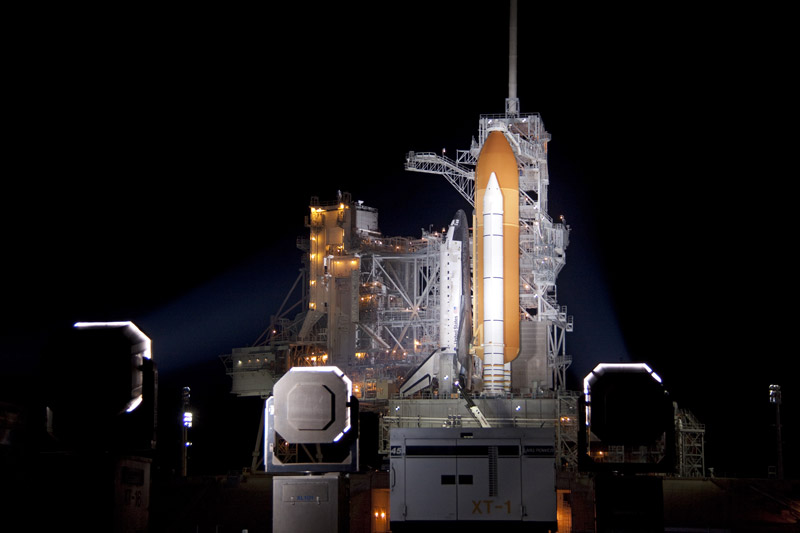Fourth Crack Discovered On Space Shuttle Discovery's Fuel Tank

NASA engineers have found another crack – the fourth so far – in the metal skin of the external fuel tank attached to the space shuttle Discovery.
The new crack is similar to three others spotted on aluminum ribs near the midpoint of Discovery's 15-story external fuel tank. The cracks and a hydrogen gas leak on the tank have prevented Discovery from launching on its final spaceflight this month from its seaside pad at NASA's Kennedy Space Center in Florida.
NASA spokesman Allard Beutel told SPACE.com today (Nov. 15) that an analysis is under way on Discovery's fuel tank and engineers are discussing plans to inspect other nearby ribs for cracks as well. The cracks and gas leak on Discovery's tank must be repaired before the shuttle can launch on its last space voyage, he added.
Inspectors initially spotted a long crack in the insulating foam on the shuttle fuel tank.
While investigating that crack, engineers found two smaller cracks in one of the 108 ribs that girdle the external tank's midpoint between its liquid hydrogen and liquid oxygen tanks. A third crack was discovered last week, only to be followed by this latest, fourth crack over the weekend.
Beutel said that NASA has repaired cracks similar to those on Discovery's fuel tank many times in the history of the agency's nearly 30-year shuttle program. However, this is the first time the cracks have been detected on a tank already at the launch pad, awaiting blastoff, he added.
"The key thing is this work that we've never done before on the pad," Beutel said.
Get the Space.com Newsletter
Breaking space news, the latest updates on rocket launches, skywatching events and more!
The cracks are on ribs that provide extra structural support to the shuttle fuel tank's so-called "intertank" region – a transition spot between the two fuel tanks. [GRAPHIC: NASA's Space Shuttle – From Top to Bottom]
"It's where we keep the electronics and wiring for the tank," Beutel said. "It's mostly just empty space."
To fix the cracks, engineers typically cut off the cracked portions and replace them with thicker aluminum ribs that are then bolted into place. The foam insulation is then reapplied.
Beutel said NASA is still aiming to try and complete repairs on Discovery's fuel tank in time for the next window to launch the shuttle on its mission to the International Space Station. That window opens Nov. 30 and closes around Dec. 6, he added.
The next possible time that Discovery can attempt a liftoff is Nov. 30 at 4:02 a.m. EST (0902 GMT). Discovery is scheduled for an 11-day supply mission to the space station to deliver a humanoid robot helper for the station crew and a new storage room for the orbiting lab.
The STS-133 mission will be Discovery's grand finale in space before being retired in 2011 along with the rest of NASA's shuttle fleet.
Join our Space Forums to keep talking space on the latest missions, night sky and more! And if you have a news tip, correction or comment, let us know at: community@space.com.

Tariq is the Editor-in-Chief of Space.com and joined the team in 2001, first as an intern and staff writer, and later as an editor. He covers human spaceflight, exploration and space science, as well as skywatching and entertainment. He became Space.com's Managing Editor in 2009 and Editor-in-Chief in 2019. Before joining Space.com, Tariq was a staff reporter for The Los Angeles Times covering education and city beats in La Habra, Fullerton and Huntington Beach. In October 2022, Tariq received the Harry Kolcum Award for excellence in space reporting from the National Space Club Florida Committee. He is also an Eagle Scout (yes, he has the Space Exploration merit badge) and went to Space Camp four times as a kid and a fifth time as an adult. He has journalism degrees from the University of Southern California and New York University. You can find Tariq at Space.com and as the co-host to the This Week In Space podcast with space historian Rod Pyle on the TWiT network. To see his latest project, you can follow Tariq on Twitter @tariqjmalik.









